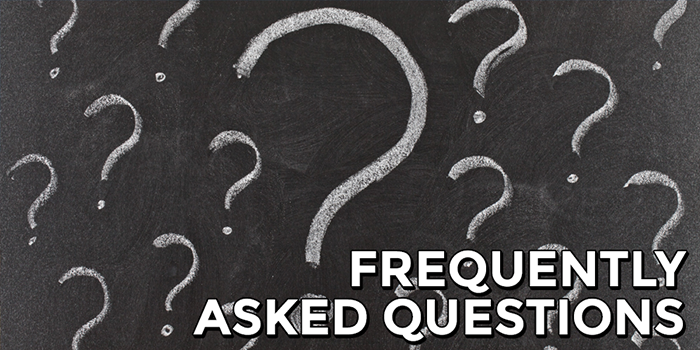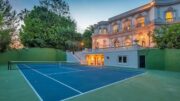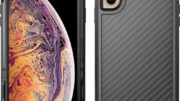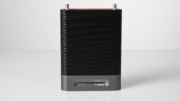Do you have questions about how a cell phone signal booster can improve reception at your home or business? You’ll find all the answers about cell boosters here.
Cell phone signal boosters improve the cellular phone reception in your home or business. While this description makes these devices sound so simple, we know you have questions. It’s only natural. To get you the information you need quickly and easily, we’ve compiled this list of frequently-asked questions and answers about cell signal boosters. If you have any other questions, give us a call at 888-233-7563. Our product experts are happy to guide you toward the cell phone signal booster you need.
How can I tell if one of these systems will benefit me?
If you can get signal outside your home or business but not inside, there´s a good chance a cellular signal booster will benefit you. In that type of scenario, it’s usually the building materials, such as concrete, metal siding, and brick, that prevent the signal from passing. If you get no signal inside and no signal outside, then the success of a cell phone booster system depends upon whether you can find somewhere to get signal. This is usually up on the roof. Just because your cell phone isn´t getting signal on the roof doesn´t mean there isn’t a signal. The antennas that come with cell signal booster systems are much stronger than your cell phone antenna. You can also buy high-powered outdoor antennas to improve your chances.
Can I install a cell phone signal booster myself?
Absolutely! And you don´t even need to get on the roof to do it. Oftentimes, you can put your cell booster in the attic or under the eve of your roof using a J-mount. The hardest part is running the cable from the outdoor antenna to the inside unit. All you need to do is locate where you get the best signal outside, install the outdoor antenna, then place the base unit in a central area of your home.
How do I aim my outdoor antenna?
Most antennas are omnidirectional. This means they pick up signal from all directions and don´t require directional tuning. Omnidirectional antennas often resemble a 1.5’-2.5’ piece of PVC Pipe. Directional antennas are usually stronger then omnidirectional antennas because these devices are pointed straight toward the broadcast tower. If you’re not able to see your local cell phone tower, you can search this website to locate the tower or call your service provider. To fine-tune the antenna, it´s best to use a signal meter to measure your results. If you don´t have a meter, you can adjust the antenna until you get the largest signal coverage in your building.
Where is the best site for an outdoor antenna?
The best site to install an outdoor antenna is usually high upon the roof with a clear view to the cell tower. Metal also affects the signal, so try to keep the antenna at least four feet from any metal objects, such as air conditioning units, duct works, metal roofing, etc.
Where is the best site for an indoor antenna?
If the antenna is omnidirectional, it’s best placed in a central location where you need signal most. This allows the signal to penetrate the surrounding rooms. When using a single indoor antenna, it´s best to put the antenna on the floor. While signal boosts can benefit other floors, the signal coverage is greatest on the floor where the indoor antenna is located.
Can I mix and match antennas/amps?
Technically, you can, but there’s really no need to do this. Solid Signal carries a full line of top-quality cellular signal boosters, antennas, and accessories from weBoost. FCC regulations require the manufacturer to include everything you’ll need in a cellular signal booster kit, and weBoost has kits for every need. Our inventory of weBoost products and our knowledgeable team of product experts means that you’ll always get the exact signal booster and antenna you need for your home, office or vehicle. There’s no need to mix and match when we have your weBoost solution, whether you need to boost signal to 250 square feet or 80,000.
Will a cell phone booster help my wireless devices for cellular Internet?
Most cellular signal boosters will also boost the 4G/LTE frequencies used by all data cards. You can choose between a dual-band booster, which boosts voice only, or a five-band booster that boosts the LTE frequencies used by every carrier except Sprint. If you choose a booster that handles 4G/LTE frequencies, it will work with your phone, tablet, or data-card-equipped laptop to give you faster data speeds.
Can I get a cellular signal booster that improves Sprint’s 4G/LTE signals?
Unfortunately, Sprint’s customer base is not large enough for companies to invest in cell boosters for Sprint’s unique frequencies and data technologies. If you have Sprint, you can save money by getting a cellular signal booster that only boosts voice.
How much separation is required between the two antennas?
We recommend 15 feet of vertical separation between indoor and outdoor antennas. Some manufacturers recommend more.
Does a cell phone signal booster need to be grounded?
We recommend grounding the cable before it enters the building. Local codes vary, so check with City Hall and then shop at Solid Signal for the grounding supplies you’ll need.
What’s the best cell phone signal booster for my car?
We have many options for vehicle boosters. The best prices you can get are on the ones that feature a cradle that allows you to leave your cell phone on. Obviously, this only benefits Bluetooth users, but you can save a lot of money on these devices and they work quite well. There are also vehicle boosters that don’t require a cradle and work more like traditional cell phone boosters with roof-mounted antennas.
How many phones does a cell phone signal booster system support?
At least 10 from what the manufacturers suggest, but the limits of these systems have rarely been pushed. We can say that at least 10 people can operate from the cellular booster at once.





